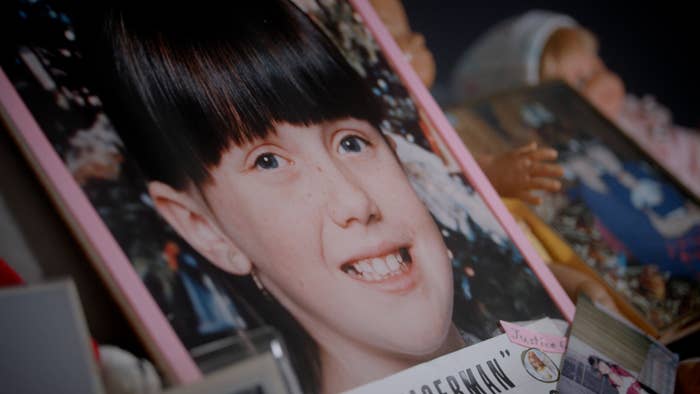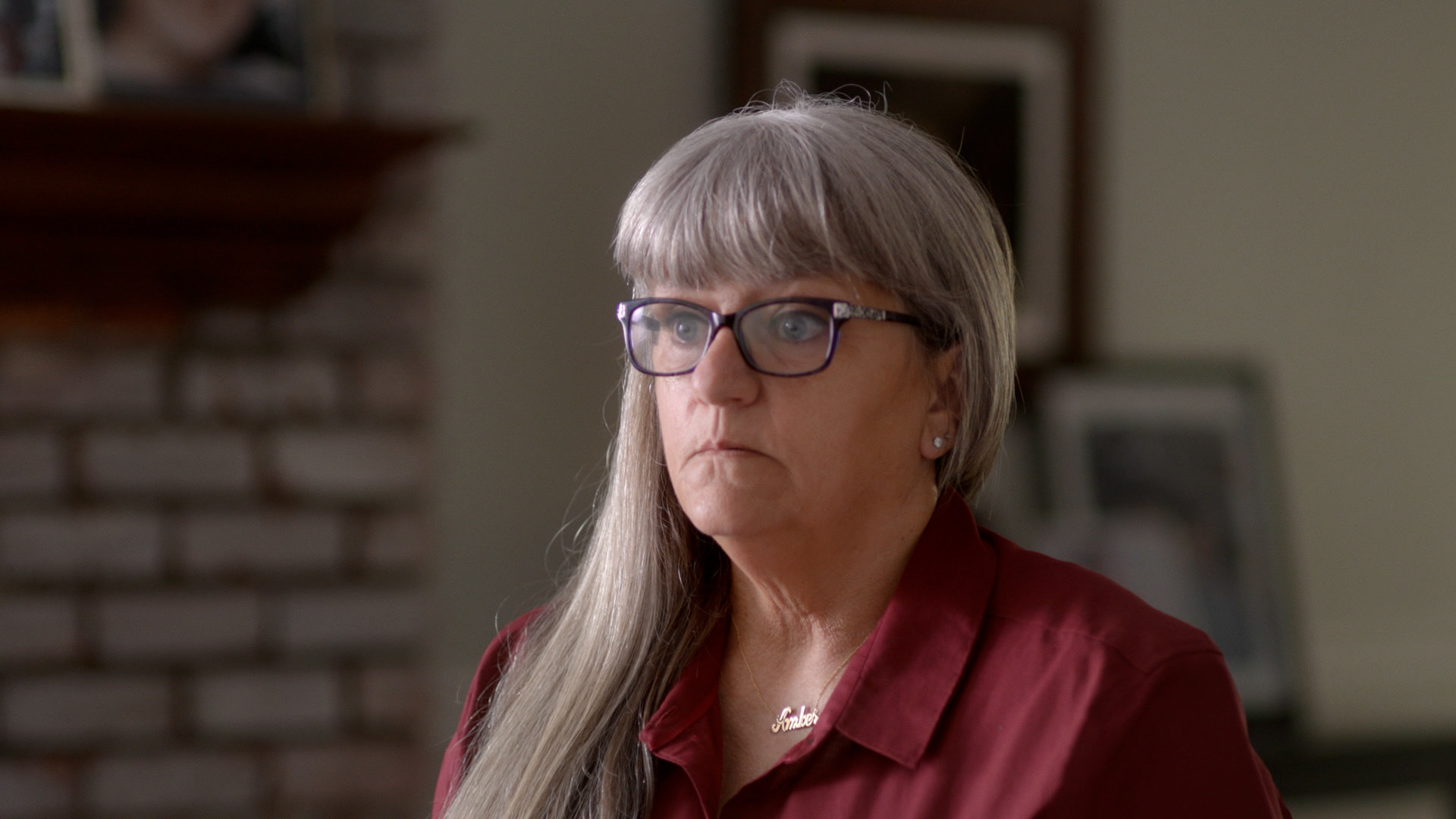
On Jan. 13, 1996, 9-year-old Amber Hagerman was kidnapped by a stranger in a truck after going on a bicycle ride with her younger brother.
The public might not have heard about her disappearance if not for the fact that her mother, Donna Williams (then Whitson), had been participating in a local WFAA news documentary about women’s experiences with the welfare system. After the kidnapping, the channel shared footage of Amber taken while filming From Welfare to Work in hope that someone could help find her.
The wealth of visuals — Amber playing with her brother, showing her art pieces, having dinner with her mom — made viewers feel like they knew her and the family, and the missing girl became a huge story, especially in her hometown of Arlington, Texas. In 1997, WFAA aired a special, After Amber.
Amber’s kidnapper has never been found. But the aftermath of her disappearance eventually led to the creation of the national Amber Alert system deployed when a child is abducted; Hagerman’s name became an acronym that stands for “America’s Missing: Broadcast Emergency Response.” In the present day, the Amber Alert is a blaring announcement, delivered to our phones, that proclaims the identifying features of perpetrators, victims, and getaway cars. Its advocates often point out the alert has led to the rescue of about 900 children.
Peacock’s Amber: The Girl Behind the Alert is part of a wave of crime documentaries excavating ’80s and ’90s stories, including Hulu’s Captive Audience and Netflix’s Night Stalker, which position themselves as ethical tellings featuring the in-depth perspective of crime victims or their families.
In this case, Williams and Amber’s brother, Ricky Hagerman, cooperated with producers and appear often, sharing their memories of the events depicted.
Yet even with the documentary’s initial emphasis on the family’s voices, its clunky, repetitive storytelling does a disservice to the case. The result comes off as an opportunistic rehash, rather than a true foregrounding of the family’s perspective or a serious examination of the stakes of the story and its complex legacy.

The day Amber went missing, Williams had allowed the children to bike home from their grandmother’s place. That day, Ricky remembers, he tailed his older sister until they came across a prohibited area next to a Winn-Dixie parking lot. She told him to pedal ahead of her, and when he was close to their house and looked back, she was gone.
A caller said he had witnessed a child being snatched by a man in a black truck, and Williams reported her missing. Soon, her disappearance became a missing-person case.
Amber offers endless and repetitive footage of police officers recalling a step-by-step procedure of the investigation and how little they had to go on. Their theories about the perpetrator followed familiar patterns: They considered Amber’s father, Richard, whose abuse had led to Williams moving to a shelter, and a neighbor with a black truck. Four days after Amber disappeared, a man walking his dog found Amber’s body near a creek.
Williams became a public figure while mourning for her daughter. Talking heads like police officers and an America’s Most Wanted producer explain how she kept her daughter’s memory alive by talking to the media, making appearances on newscasts and morning shows; there’s footage of her visiting the police headquarters to check up on the investigation.
Diana Simone, a Texas mother who had followed Amber’s story, called and wrote to a radio station suggesting the creation of an alert system to aid with future rescue efforts. A law enforcement spokesperson explains that the police communications department and radio broadcasters collaborated to develop the system. Apart from that, we don’t see much about how the alert was actually created. Instead, we are told it was a success. After deploying the alert in 1998, the Arlington police department rescued a 2-month-old baby, Rae-Leigh Bradbury, who had been kidnapped by her babysitter. “She’s got the baby sitting in front with her!” we hear a caller say in a recording. “That’s her! I can’t believe it.”
Since its inception, there have been endless critiques of the Amber Alert, along the lines that it is more a spectacle that promotes law enforcement than an actually effective tool. The documentary does not address these criticisms.
Amber also fails to note any of the critiques about how encouraging this kind of “see something, say something” surveillance feeds into crime panics and creates a state of paranoia as well as a sense that constant policing is effective and necessary. In fact, the documentary tacitly accepts surveillance culture by, for example, including the America’s Most Wanted spokesperson as a talking head.
There has been a lot of debate about the true crime glut and the genre’s ethics. Most of it has centered on the often gratuitous emphasis on gore or serial killers, especially when shows disregard the feelings or perspective of victims’ families. But mainstream true crime documentaries and media also often avoid connecting individual crimes and their legacies to broader societal developments.
Here, the Amber Alert is treated like a politically neutral net positive, a way for regular citizens to contribute to a safer community by collaborating with law enforcement as their eyes and ears. Yet this was the era when politicians were focused on criminalization that disproportionately affected certain populations. Recently, Polly Klaas’s sisters spoke out about the way their sister’s murder in Petaluma, California, in 1993 was used to promote then-president Bill Clinton’s racist crime laws that led to the imprisonment of so many Black people. In Amber, instead, we see footage of George W. Bush triumphantly signing a 2003 law nationalizing the Amber Alert, a measure that neatly helped sell his own racist tough-on-crime laws.
The film’s closing captions note that though Amber’s kidnapper was never caught, the alert has helped rescue hundreds of other children. And the documentary ends on a hopeful note, with Williams meeting the producer who helped spread the footage of her daughter in 1996.
Paradoxically, Williams’s own relationship to investigators in the documentary seems ambivalent. She describes herself as “frustrated” and “angry” that law enforcement failed to make headway on Amber’s case. “Why can’t they find this man? How hard can it be?” she says to the camera. The documentary renders those feelings as personal frustration rather than, for example, an actionable example of ineffective policing.
Amber Hagerman’s story was the foundation for a cultural phenomenon now enmeshed in many people’s lives. With such a significant history to draw on, Amber had an opportunity to revisit and push against the limitations of true crime storytelling. Instead, it just repeats them without critique. ●
